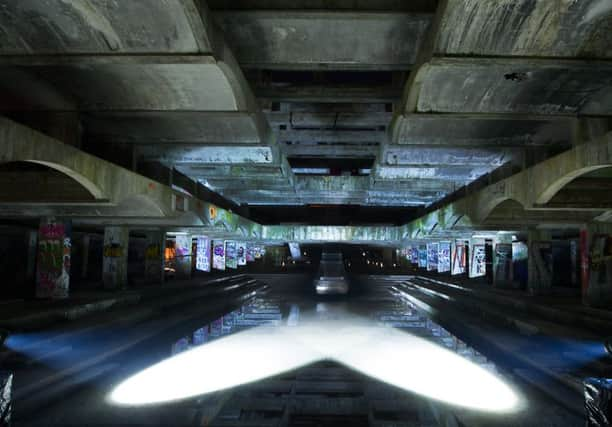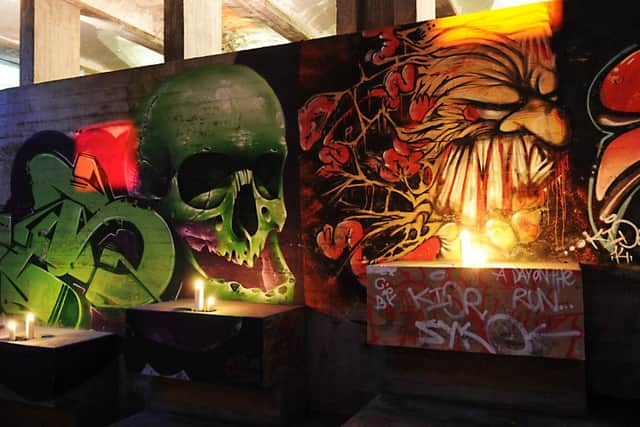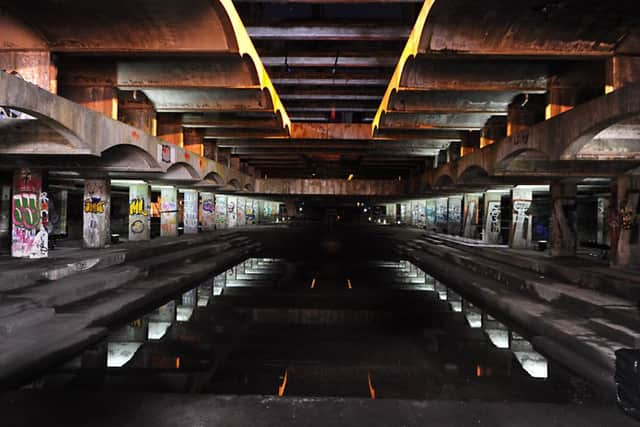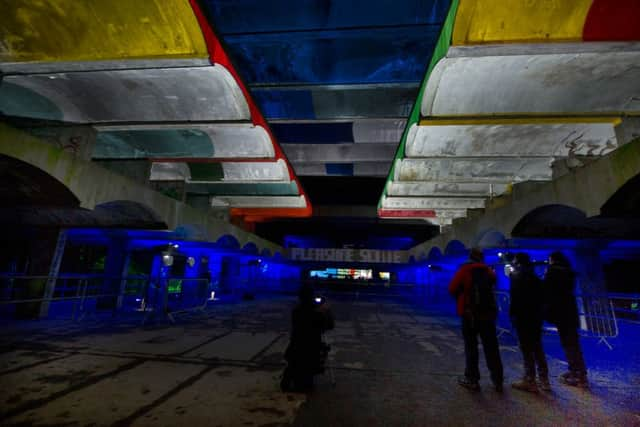Hinterland shines new light on St Peter's Seminary


For 25 years, it was Scotland’s best-kept secret. Along a winding path through woodland on the outskirts of Cardross, through a gap in the security fence, lay Scotland’s greatest modernist ruin. Its futuristic concrete structure invisible from roads, St Peter’s Seminary became a place of secular pilgrimage: artists, film-makers, musicians and architects all beat a path to it.
Designed by Scotland’s leading modernist architects Isi Metzstein and Andy MacMillan, St Peter’s opened as a training college for priests in 1966. Little more than a decade later, amid falling numbers of recruits and changing policies in the church, it was no longer needed. After a spell as a drug rehabilitation centre in the early 1980s, it began its descent into ruin. The next 25 years were punctuated by campaigns to rescue it from demolition and failed attempts at commerical regeneration.


Advertisement
Hide AdAdvertisement
Hide AdThe news that NVA – the arts organisation responsible for large-scale public artworks such as The Path, The Storr and Speed of Light, and who created the Hidden Gardens at Glasgow’s Tramway – were taking on St Peter’s prompted widespread interest. In 2014, the organisation announced a £8 million development project – part restoration, part new-build – which would create a 600-capacity arts venue, teaching and development spaces and woodland walks on the site.
St Peter’s has remained closed to the public since then – more so than before, the hole in the fence having been repaired – but this week it is on public display, perhaps for the first time ever in its 50-year history. NVA’s first work on the site, Hinterland, is a night-time installation involving sound, light and specially composed music. Audiences bused from Helensburgh will follow a meandering route in and out of the building while sections of it are animated by sound and light. Billed as the last chance to see St Peter’s as a ruin, the show has already attracted huge interest, not least to see what NVA creative director Angus Farquhar and his team can do with a building already redolent with atmosphere.
“It’s the least neutral setting I’ve ever worked with,” says Farquhar. “And NVA have worked in some pretty powerful locations in the last 20 years. But this place at night, it really does something to you. At times I’ve felt very threatened in the building, and at other times I’ve felt cocooned. We’ve built up a very particular expertise over 20 years of understanding how you can animate space and places, from mountainsides to deserted hotels. All the lessons that we’ve learned are coming to fruition through our approach to saving this building and giving it new purpose.”
On Hinterland, NVA are working with lighting designer Phil Supple, projection designers NOVAK Collective, 85A art collective and one of Scotland’s leading composers, Rory Boyle, whose score has been recorded with St Salvator’s Choir at St Andrews University. Yet, the star of the show is still likely to be the building itself. Farquhar says: “As an artist, it forces you both to be very creative and to react to what’s there. You can’t create a neutral piece of work here. It is such an overwhelming presence, it’s more about holding back. This is an homage to what’s there.”


Rory Boyle, Professor of Composition at the Royal Conservatoire of Scotland, freely admits that his work will be playing second fiddle to Metzstein and MacMillan. “I could tell that my job was a bit like a film composer, to be in the background, enhancing the atmosphere of things. There’s so much to see, even in the building’s present state, that I knew the eyes would be absorbed by what’s happening and I needed to be as subtle as I could.”
Boyle realised he had a poignant personal connection to St Peter’s when he discovered that his composition teacher, Frank Spedding, had composed the music for Murray Grigor’s iconic film about the building, Space and Light. “That was a gift to me. To describe the spiritual part of the building Frank used a plainsong chant, Veni creator spiritus, threaded through the piece. I decided to use that in my work, in homage to Frank, who I was devoted to, although I use it in a very different way. I’ve structured the music in three sections, past, present and future. The ghosts of the past are still there, the present is the desolate state, but I hope that the final passages will have some optimism about what is clearly going to be a very exciting future for the building.”
Hinterland happens at a threshold moment when St Peter’s is cleaned up and made safe but before the restoration and redevelopment begins in earnest. “I often think buildings are at their most interesting when the hoarding is up,” says Farquhar. “In Hinterland, we’re creating echoes from the past, but also imagining where it may go in the future. It lays out the potential for all these remarkable internal spaces, all the possibilities they create for future work.”
Advertisement
Hide AdAdvertisement
Hide AdHe says he hopes those who enjoyed St Peter’s as an atmospheric ruin will understand that it couldn’t remain that way. “It was acknowledged that what we would do was the last chance for the architecture itself, that it had reached a point of near fatal collapse in certain areas. Standard forms of regeneration just curl up and die when you’re looking at this building and what it is. I think, slowly but surely, all the key partners realised that a more innovative approach could pay real dividends.”


He said that the work done in the last two years to make the building safe, remove asbestos and deal with the imminent collapse of some of the curved vaults in its roof has actually revealed new aspects of the architecture. “I was worried about ruining the ruin, that in cleaning it up would we somehow neuter it. But what it has done is reveal just how strong the original design was. It has hugely sculptural qualities, if not necessarily practical qualities (reports from seminary students who lived there suggested it was constantly plagued with draughts).
“In some ways the life of the building now might be more important than what it was doing 50 years ago. For a long time it was stuck in a certain argument about experimental modernist architecture, but now we’ve come out of the other end where it’s free of those constraints, and we can release some new thinking about the incredible boldness and ambition of architecture in that time.”
• Hinterland runs until 27 March, www.hinterland.org